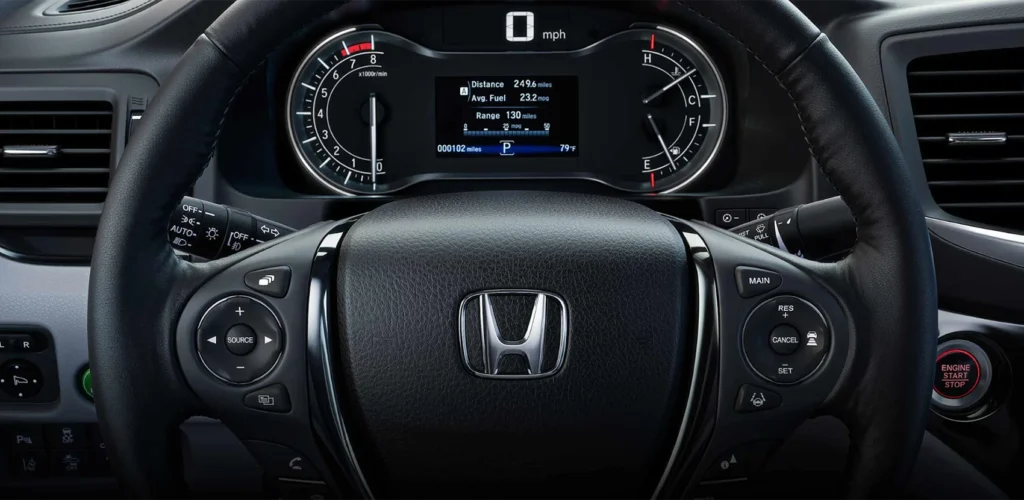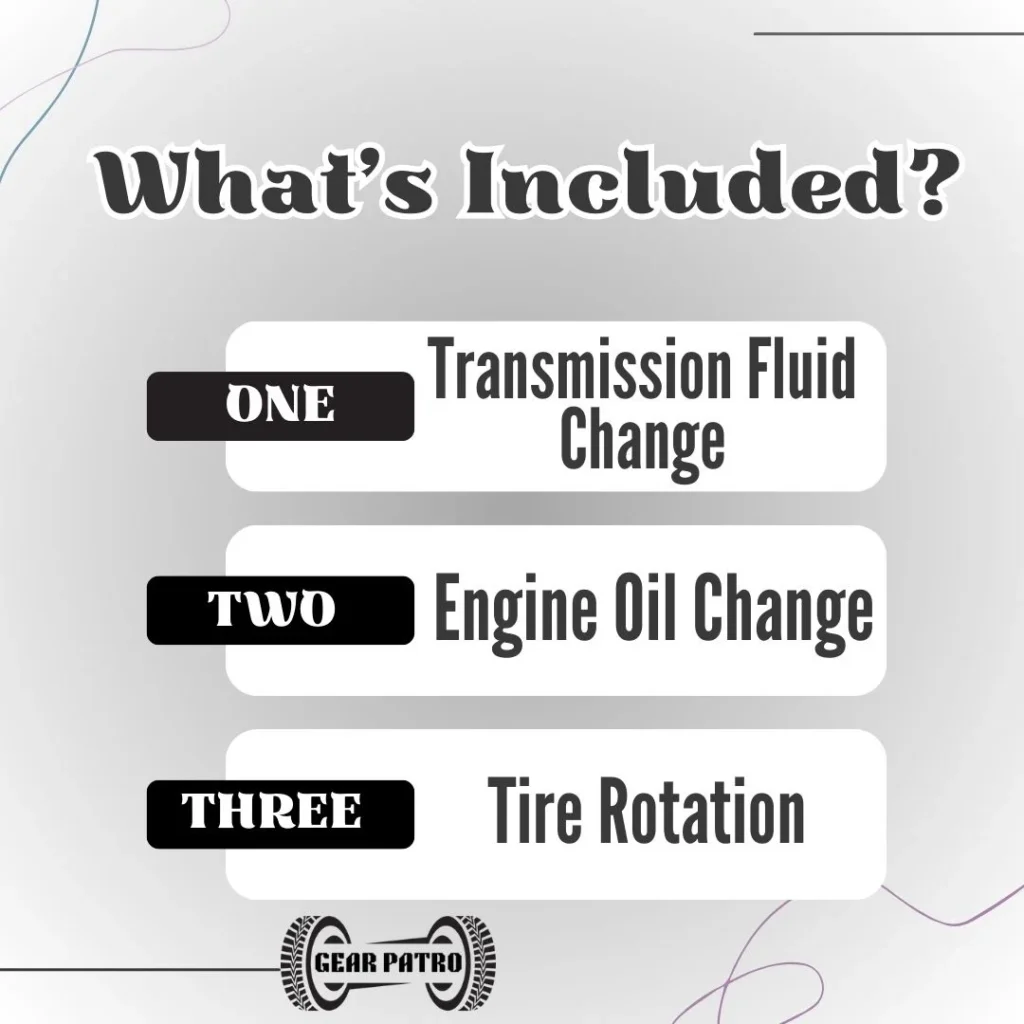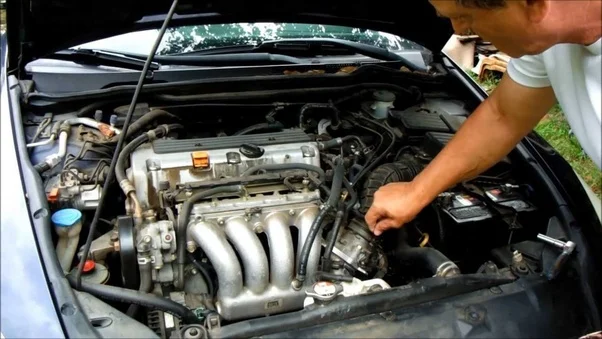How does the A13 Service Code affect Honda owners who just learned about it? You are in the right place if that is the case. You will see the A13 Service Code on the vehicle information display (VID).
![Honda A13 Service [What It Included & Cost]](https://gearpatro.com/wp-content/uploads/2024/06/Honda-A13-Service-What-It-Included-Cost.webp)
In this article, we’ll explain what the A13 Service Code means and how to resolve it.
What Does Honda A13 Service Mean?
Honda A13 Service Code can help you determine when your vehicle needs maintenance. This service includes changing your oil, rotating your tires, and changing your transmission fluid. Honda owners are recommended to have this service performed every 10,000 to 20,000 miles.

Your car needs maintenance if it displays the A13 Service Code on the vehicle information display (VID).
Performing the necessary maintenance when prompted by the A13 Service Code may prevent problems such as decreased fuel efficiency or engine damage.
Maintenance should be performed as soon as possible if the A13 Service Code is displayed.
What’s Included?
Honda dealerships offer these three core services whenever you ask for an A13 service:

Transmission Fluid Change
Whether it is an automatic transmission or a manual transmission, fluids are essential for keeping them running smoothly. Eventually, however, these fluids become dirty and breakdown, reducing efficiency and posing a risk to system components.
You can prevent future transmission issues by replacing your transmission fluid on a regular basis.
In order to maintain good working condition over the years, a Honda’s transmission needs regular maintenance. It can be costly to replace parts or even replace your transmission entirely if you do not change your transmission fluid regularly.
Honda cars and SUVs will shift more smoothly and have better fuel economy when transmission oil levels are regularly checked.
By replacing contaminated oil with clean oil, an engine’s timing is enhanced, resulting in higher fuel efficiency compared to engines whose owners neglect their fluids for too long.
When towing a trailer or driving in mountainous regions at extremely slow speeds, transmission temperatures often rise. It is therefore necessary to replace transmission fluid more often than recommended by the Maintenance Minder.
If you drive regularly under those conditions, Honda recommends changing the transmission fluid every 60,000 miles or three years. You should then change your transmission fluid every 30,000 miles or two years, whichever comes first.
Engine Oil Change
Every engine relies on oil for several important functions. A lubricant like oil reduces wear and tear in engines by reducing metal-on-metal contact. It also functions as a heat transfer fluid in addition to cooling.
If there is not enough oil to keep vital components cool, they may be damaged.
As well as cleaning internal engine components, oil also cools them. The combustion process sweeps away dirt, grime, and small particles as dust, pollen, and oil are carried through the system.
With age or contamination, oil’s cleaning ability decreases. Such substances include fuel and antifreeze. It is necessary to change the oil on a regular basis.
In addition to preventing corrosion, oil protects metals from reacting with oxygen in the air and acidic compounds that can develop inside the crankcase and cause corrosion when exhaust fumes or inefficient burning of fuel is involved.
Regularly changing the oil coat can prevent corrosion over time.
Tire Rotation
You’ll get better performance out of your Honda vehicle if you replace its tires regularly. You can extend the life of your Honda’s tires, maximize their performance, and reduce their wear and tear by rotating them.
Rotating your tires regularly can help ensure that they wear evenly, especially if you drive long distances or make many turns. The last thing you want is for one tire to wear out while the rest remain intact.
If the tires aren’t rotated correctly, they might lose traction and handling sooner. During cornering and braking, your Honda’s performance will be hindered by uneven tire patterns.
It is also more difficult for the engine to maintain speed on different terrains if the tire wears unevenly, which results in a higher fuel consumption level.
Maintaining proper rotation regularly is crucial for reducing fuel costs.
A regular rotation of tires can also reduce vibrations at higher speeds, which is another aspect of overall tire maintenance that shouldn’t be overlooked. Due to the way the wear patterns are distributed evenly on each corner, this is why the axle system wears evenly.
DIY Tips
The A13 service can be performed by you, as a vehicle owner, but some tasks should be left to a professional. You should check your Honda’s fluids on a regular basis, inspect its tires, and monitor its battery to keep it in good working order. Check your Honda manual for instructions on how to follow Honda’s guidelines.
Benefits Of Timely A13 Service
A13 service can provide many benefits to your Honda if you follow the recommendations. In addition to extending engine life and improving performance, you will also save on fuel. By keeping your Honda serviced regularly, you can avoid costly repairs in the future.
How Much Does It Cost?
You will need to pay between $250 and $300 for parts and labor to service a Honda A13 at a dealership. These costs include transmission fluid replacement, tire rotations, and other maintenance tasks. You can also bring your own parts to many dealerships and they will only charge you for labor.
The dealer may charge you between $130 and $170 for labor if you bring your own parts.

Self-help is possible if you’re willing to do the work yourself. Depending on what needs to be done, parts alone could cost $50-$100.
In addition, oil filters and spark plugs will need to be purchased. If you decide to do the work yourself, it is important to use the right tools for each job and follow all safety precautions.
Take care of all your car’s maintenance needs, whether you hire a professional or do it yourself.
How Can You Clear A13 Service Alert On Your Vehicle?
Your Honda’s VID displays A13 service alerts. Please contact your local dealership if you receive one to schedule a service appointment to inspect the affected part (or parts). An appointment with a certified technician will allow for an accurate diagnosis of the problem and the repair or replacement of any necessary parts.
Using a diagnostic tool or manually by a certified mechanic, the VID can be reset once the affected part(s) have been repaired/replaced. Before driving again, make sure you have cleared all previous diagnostic codes from the control units.
Following the reset of your vehicle’s VID, you should contact your local Honda dealership’s customer service department if you require additional clarification or educational materials.
How Long Does The Service Take?
The engine oil in a Honda vehicle can be changed in 15 to 30 minutes. As soon as the old oil is drained, the filter is replaced, and the old oil is drained, new oil is poured into the engine.
Rotating tires on a vehicle can take between 30 and 45 minutes, depending on the type and number of tires.
It takes between 60 and 180 minutes to replace transmission fluid, depending on the vehicle and how much fluid is needed. All three tasks of a Honda A13 service are typically completed by a professional mechanic within three to four hours.
What Are The Other Honda Maintenance Minder Codes You Should Know About?
A Honda Maintenance Minder code is essential to maintaining your car and keeping it running smoothly. It monitors the car’s condition and alerts the driver when service is due via a dashboard display. The following codes are found on all Honda models:
Code A: Change Engine Oil
Your car’s engine oil and oil filter must be changed regularly. Every 5,000-7,500 miles, depending on your Honda model, you should complete this service. Contact your Honda dealer for more information about the recommended oil change for your Honda.
Code B: Oil Change And Tire Rotation
The engine oil, oil filter, and tires of your vehicle need to be changed if this is the case. The service should be performed every 7,500-10,000 miles, depending on your Honda model. You should receive detailed information regarding your vehicle’s scheduled maintenance requirements from your Honda dealer.
Code 1: Rotate The Tires
A tire rotation and inspection should occur every 10,000 miles or 12 months (or sooner if conditions warrant). Tire wear can lead to poor handling or loss of control if you do not inspect them regularly.
Code 2: Air Cleaner, Dust And Pollen Filter, Drive Belt Inspection
The code 2 indicates that the drive belt and air cleaner of a Honda vehicle need to be replaced. Air cleaners prevent contaminants from entering engines during the intake process.
The dust and pollen filter in your car can reduce allergens in the cabin. It is imperative to inspect the drive belt for cracks or wear caused by heat or aging as a last step before installing the belt.
Leaving this unchecked could result in expensive repairs down the road. Depending on your Honda model, this service should be performed every 10,000-12,000 miles. Get in touch with your Honda dealer if you’re interested in learning more about your vehicle’s scheduled maintenance.
Code 3: Transmission Fluid Replacement
Transmission fluid keeps your vehicle’s components operating smoothly by acting as a lubricant. As well as reducing friction and heat, it prevents wear on internal components. Over time, dirt, debris, and other particles can contaminate transmission fluid, causing it to become damaged.
Regular transmission fluid replacement will maximize your vehicle’s performance and extend its lifespan.
Your Honda dealer may recommend replacing your transmission fluid every 30,000-50,000 miles, depending on the model you own.
Code 4: Replace The Spark Plugs And Timing Belt. Check The Clearance Of The Water Pump And Valves
An automobile’s ignition system relies heavily on the spark plug. During combustion, air and fuel combine to produce power needed to move the vehicle. If your car is of the right make and model, you should replace your spark plugs every 30,000 to 50,000 miles.
Crankshafts and camshafts are connected by timing belts in internal combustion engines. They can work effectively and efficiently together when their rotations are synchronized. 60,000 to 90,000 miles is the recommended interval for replacing the timing belt on Honda A13 vehicles.
The water pump circulates coolant throughout the engine of a car. It maintains an optimal engine temperature by transferring heat to the radiator. A water pump is not only responsible for maintaining cooling system pressure, it is also responsible for ensuring efficiency.
Maintenance Minder recommends replacing your water pump every 60,000 miles unless you drive in extremely high or extremely low temperatures regularly.
The valve clearance is determined by the distance between the rocker arm and the cam follower of a valve stem. In order for an engine to function properly, this gap must be kept within certain limits.
In the event that oversized valves are not able to open and close properly, they can lead to poor performance and increased fuel consumption. When friction is too small, components will be subjected to excessive wear. Valve clearance should be adjusted by a qualified mechanic using special tools.
Code 5: Engine Coolant Replacement
Keeping an engine’s temperature at a comfortable level is made easier by engine coolant. Heat is transferred away from the engine by dissipating it into the atmosphere. Some engine parts are also lubricated by the coolant in addition to providing corrosion protection.
The type of vehicle, how often it is driven, and the environment it is driven in determine when engine coolant needs to be replaced. It is generally recommended that engine coolant should be changed every 30,000 miles or 48,280 kilometers (generally).
When driving in extreme temperatures or towing heavy loads, you may need to change your coolant more frequently.
In the event that a vehicle’s cooling system leaks coolant or has any other cooling system problems, it should be checked out and, if necessary, replaced.
Code 7: Brake Fluid Replacement
The old brake fluid needs to be replaced with fresh new fluid since this code indicates that the system needs to be flushed. If the brake fluid has been used regularly for more than 30,000 miles, it should be replaced every three years, depending on the original installation date and the usage pattern.
The brake fluid should be replaced approximately every three years or 30,000 miles, according to experts. Regular inspections are recommended at least once a year.
Using these codes, the Maintenance Minder System notifies you when your vehicle needs factory-recommended maintenance.
Depending on your Honda model and make, these services may differ from those explained in your Honda owner’s manual.
By following these maintenance instructions, you’ll improve the performance of your car!
Advanced Techniques
As technology advances, a vehicle’s servicing approach changes. Using advanced techniques, such as diagnostic tools and computers, the A13 service is more precise and efficient. Honda invests in cutting-edge solutions to give your Honda the best performance possible.
Environmental Impact
The Honda A13 service is also environmentally friendly, in addition to its commitment to sustainability. It is important to dispose of used parts properly in order to maintain a greener vehicle. Choose a service center that follows these principles if you want to make an eco-conscious choice.
When Should I Have My Honda A13 Service?
The Honda A13 Service should be performed every 12 months or 7,500 miles. Your Honda vehicle will run more efficiently and smoothly if you do this.
What Is The Location Of The Service Center?
Service can be performed by local Honda dealers. The dealer will have the necessary parts and tools to provide quick and efficient service.
Independent auto repair shops are also qualified to perform this service. The shop must, however, use Honda-approved parts and fluids.
Honda A17 Service [What’s Included & Cost]
Honda B17 Service Code: Checklist & Maintenance Cost
Honda B14 Service Code: Checklist & Maintenance Cost
Frequently Asked Questions
How To Reset Oil Life on Honda Civic?
On a Honda Civic, start the engine and press the ignition button to reset the oil life indicator. Last but not least, press the steering wheel menu button twice.
Pressing and holding the Enter key will bring up the Maintenance screen. You will reach oil life after scrolling through the options. Keep the enter button pressed for a few seconds after resetting the oil life to 100%.
How To Reset Oil Life on Honda Accord 2008?
When you press the SELECT/RESET button on the 2008 Honda Accord, the oil life will be reset. Turn the ignition to run when the oil life indicator appears, and then press the RESET button. In order to see the maintenance code blinking, you need to hold the button for 10 seconds. By pressing and holding the button for five seconds again, you will reset the oil life.
Is the A13 service expensive?
By investing in a regular A13 service rather than neglecting it, you secure your vehicle’s health.
What is B1 Service For Honda?
The Honda B1 service includes changing the oil and rotating the tires. As part of this service, the front and rear brakes are checked, as well as the exhaust system, fuel lines, and tie rod ends.
What Does 15% Oil Life Mean?
The oil life on your Honda should be 15% or less. Anyhow, your vehicle’s drivability is not immediately compromised.
How Much Does A Honda B17 Service Cost?
Honda B17s are serviced at dealerships for around $200. It is possible, however, to save some money by performing this service yourself.
Conclusion
Regular maintenance is offered by Honda dealerships under the Honda A13 service program. Honda vehicles require proper maintenance in order to last a long time. Tune-ups and regular maintenance help cars maintain fuel efficiency, performance, and emissions standards.
